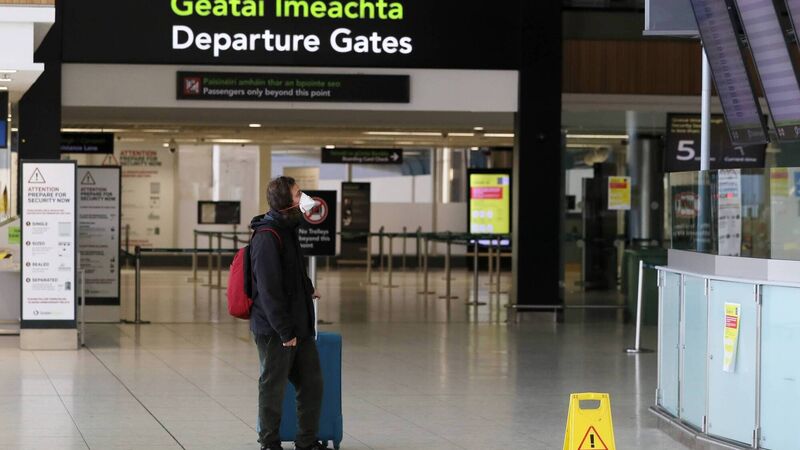Incoming travellers leaving contact without a proper trace

At present, the initial data used by the roughly 800 tracers tasked with tracking passengers is provided by the airlines, but only after an index passenger with the virus has tested positive. Naturally, this can happen several days after their arrival. File image: Brian Lawless
For several weeks, Ireland has been sleepwalking into a contact tracing nightmare, and it’s a problem that could see the system overwhelmed once more at the worst possible time.
Contact tracing of incoming travellers has not been fit for purpose, and we are now seeing the impact of this in the unsettling growth of the Covid-19 case numbers.
The issue doesn’t stem from pre-and post-flight testing, which in itself is hit or miss, but in the manner in which flights are contact traced.
At present, the initial data used by the roughly 800 tracers tasked with tracking passengers is provided by the airlines, but only after an index passenger with the virus has tested positive. Naturally, this can happen several days after their arrival.
Once that person has been identified, the call goes out for data on the case’s fellow passengers on the flight.
This, again, can take several days depending on how quickly the airline turns the request around. It’s not unheard of for it to be ten days before a tracer gets to work tracking a flight with a confirmed case.
The next obstacle is the data itself which, by its nature, is unreliable.
Often those flying aren’t the people who booked the flight for example. For others no number may be included, or an incorrect number.
Many are also barred from using their phones at their desks.
What this all adds up to is a system which is not fit for purpose, particularly in the wake of Ireland joining the EU’s traffic light system for Covid-19 travel on November 29. In normal Covid times the system creaked — in pre-Christmas-travel Covid-19 times its flaws have been really exposed.
Meanwhile, what should be a relatively reliable data source — the traveller’s passenger locator form (PLF) — has been squandered almost entirely.
In advance of the move to the traffic light system, which in simple terms meant that the mandatory 14 days of isolation for incoming travellers would no longer be required for many, tracers had been crying out for access to the forms which are a mandatory requirement for all incoming passengers, under penalty of a €2,500 fine for non-compliance.
And they do indeed now have access to the data contained on the forms, which is comprehensive. Well, they sort of do.
In truth, PLF data can only be requested from the HSE’s chief information office once the flight manifest data has been exhausted, and even then the request must come by email. Which, as already mentioned, most tracers cannot access.
You can understand now why PLF data was requested just five times, out of about 500,000 forms submitted, between August and December. If it’s already ten days since a flight landed then is it really worth an individual’s while to go through that rigmarole for minimal return?
Leaving that aside, the question remains: Why can’t tracers access the locator form data from the get-go? In an inefficient system, it would shave a few precious days off the tracing process.
What other function does the form serve?
Nevertheless, the problem is an insidious one. Because planes have been coming in by the bushel-load in early December, and, as the revealed on Tuesday, many flights from the now-shut-off UK, not to mention the Netherlands, have since returned at least one positive case of the virus.
It is not that one case that is the problem however — it’s the many people they may have interacted with since arriving in the country. Because the inescapable conclusion is that people may have been wandering around the country with the virus for days regardless of public health advice.
Is it any wonder that the HSE has started sending out texts to close contacts of (non-flight-related) confirmed cases, asking them to set up their own Covid-19 test by web link? That move in itself is reminiscent of mid-October, the last time the system collapsed, when 2,000 confirmed cases were asked to personally inform their own contacts of their diagnosis and the need to get tested.
“You should tell everyone you know not to travel,” one tracer told the regarding the situation a week ago. “It’s just not worth it.”
Ireland’s four contact tracing centres are currently the busiest they’ve ever been, with cases having increased exponentially in the past seven days. The ban on British travel may have happened in the nick of time to stop the system from being overwhelmed.
But even if it has, it will only serve to cover up the cracks.













